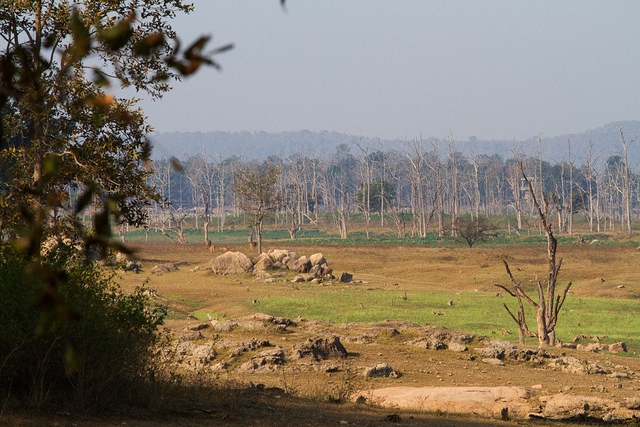Seoni is a city and a municipality in Seoni district in the Indian state of Madhya Pradesh. Seoni is bordered by Jabalpur, Narsinghpur and Mandla districts in North, Balaghat in East and Chhindwara in West and the Southern boundary of the district lies in juxtaposition to Nagpur (Maharashtra).
Rudyard Kipling used the forests in the vicinity of Seoni, or as he spells it, Seeonee, as the setting for the Mowgli stories in The Jungle Book and The Second Jungle Book (1894 - 1895), although the area is not an actual rainforest.
Seoni's economy banks heavily on the rich timber resources of the district.
Wild life lovers will love Seoni for its abundance of forests and a visit to the Pench Tiger Sanctuary can be a life time experience
It is on the Satpura plateau, and over one-third of it is covered by dense forest, making it an important destination for wildlife tourism. The main income of this region comes from the timber industry, especially teak. Seoni gets its name from the seona tree which is very common in the area. In fact the tribals make their drums or dholaks out of the wood of this tree. This is predominantly a tribal area and is rich in folk culture. The River Wainganga is the main source of life here and has a famous mud dam across it; known to be Asia's largest. Seoni town is half way between Nagpur and Jabalpur on the NH 27. It was founded in 1774 by the British, and over the years grew into a major commercial centre and rail junction of the Satpura Plateau. It has several sawmills and oil mills and is also a main production centre of lac bangles.
Seoni gets its name from the seona tree which is very common in the area. In fact the tribals make their drums or dholaks out of the wood of this tree. This is predominantly a tribal area and is rich in folk culture. The River Wainganga is the main source of life here and has a famous mud dam across it; known to be Asia's largest.
Seoni town is half way between Nagpur and Jabalpur on the NH 27. It was founded in 1774 by the British, and over the years grew into a major commercial centre and rail junction of the Satpura Plateau. It has several sawmills and oil mills and is also a main production centre of lac bangles.

According to common people Jagat Guru reached here on the way of visiting Kerala and considering pleasant place and called it Shrioni. After some ime it is known as a Seoni. And also called a Shiv Nagri.
The second reason behind this name is availability of Savan tree, which is found here in innumerable digits, which causes name Seoni.
The third reason of it is Allha married to the sonarani sister of indraman in 13th century & started living in Amodagarh near Seoni. There is clout of him near by forest area Seoni name is given due to queen sonarani, which turn to Seoni.
Air: Nearest airport to Pench is Sonegaon airport at Nagpur, placed at a distance of 93 km from Pench. Regular flights to Mumbai and Pune are available from the airport. Pre-paid taxi fare is about Rs 2000 from Nagpur to Pench.
Rail: There are important railway stations in Seoni to all minor destinations in Madhya Pradesh and Maharashta. Trains run from main parts of the Madhya Pradesh & Maharashtra to Seoni.
Road: Seoni is well connected by road to all major destinations in Madhya Pradesh & Maharashtra. The Govt & Private bus stand is located at center of city.
